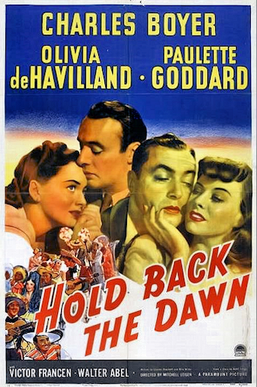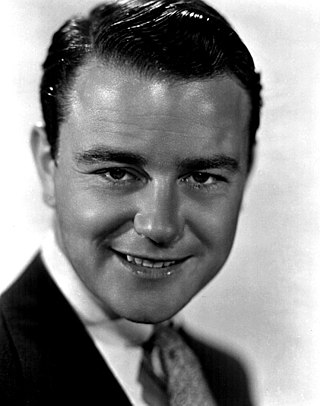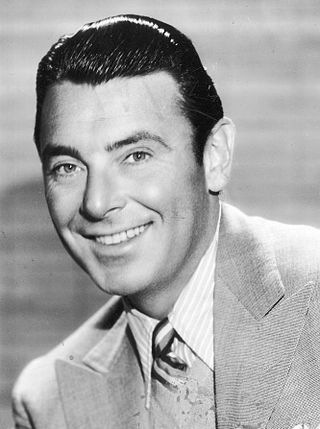
Robert Siodmak was a German film director who also worked in the United States. He is best remembered as a thriller specialist and for a series of films noir he made in the 1940s, such as The Killers (1946).

Ruth Elizabeth "Bette" Davis was an American actress with a career spanning more than 50 years and 100 acting credits. She was noted for playing unsympathetic, sardonic characters, and was famous for her performances in a range of film genres, from contemporary crime melodramas to historical films, suspense horror, and occasional comedies, although her greater successes were in romantic dramas. A recipient of two Academy Awards, she was the first thespian to accrue ten nominations.

The Heiress is a 1949 American romantic drama film directed and produced by William Wyler, from a screenplay written by Ruth and Augustus Goetz, adapted from their 1947 stage play of the same title, which was itself adapted from Henry James' 1880 novel Washington Square. The film stars Olivia de Havilland as Catherine Sloper, a naive young woman who falls in love with a handsome young man despite the objections of her emotionally abusive father who suspects the man of being a fortune hunter. Montgomery Clift stars as Morris Townsend, and Ralph Richardson as Dr. Sloper.

Hold Back the Dawn is a 1941 American romantic drama film in which a Romanian gigolo marries an American woman in Mexico in order to gain entry to the United States, but winds up falling in love with her. It stars Charles Boyer, Olivia de Havilland, Paulette Goddard, Victor Francen, Walter Abel, Curt Bois, Rosemary DeCamp, and an uncredited Veronica Lake.

Dame Olivia Mary de Havilland was a British-American actress. The major works of her cinematic career spanned from 1935 to 1988. She appeared in 49 feature films and was one of the leading actresses of her time. At the time of her death in 2020 at age 104, she was the oldest living and earliest surviving Academy Award winner and was widely considered as being the last surviving major star from the Golden Age of Hollywood cinema. Her younger sister was Oscar-winning actress Joan Fontaine.

Lewis Frederick Ayres III was an American actor whose film and television career spanned 65 years. He is best known for starring as German soldier Paul Bäumer in the film All Quiet on the Western Front (1930) and for playing Dr. Kildare in nine films. He was nominated for an Academy Award for Best Actor for his performance in Johnny Belinda (1948).

Joan de Beauvoir de Havilland, known professionally as Joan Fontaine, was a British-American actress who is best known for her starring roles in Hollywood films during the "Golden Age". Fontaine appeared in more than 45 films in a career that spanned five decades. She was the younger sister of actress Olivia de Havilland. Their rivalry was well-documented in the media at the height of Fontaine's career.

To Each His Own is a 1946 American romantic drama film directed by Mitchell Leisen and starring Olivia de Havilland, Mary Anderson and Roland Culver. It was produced and distributed by Paramount Pictures. The screenplay was written by Charles Brackett and Jacques Théry. A young woman bears a child out of wedlock and has to give him up.

George Brent was an Irish-American stage, film, and television actor. He is best remembered for the eleven films he made with Bette Davis, which included Jezebel and Dark Victory.

Hush...Hush, Sweet Charlotte is a 1964 American psychological thriller film directed and produced by Robert Aldrich, and starring Bette Davis, Olivia de Havilland, Joseph Cotten, Agnes Moorehead and Mary Astor in her final film role. It follows a middle-aged Southern woman, suspected in the unsolved murder of her lover from decades before, who is plagued by bizarre occurrences after summoning her cousin to help challenge the local government's impending demolition of her home. The screenplay was adapted by Henry Farrell and Lukas Heller, from Farrell's unpublished short story "What Ever Happened to Cousin Charlotte?"

Phantom Lady is a 1944 American film noir directed by Robert Siodmak and starring Franchot Tone, Ella Raines, and Alan Curtis. Based on the novel of the same name by Cornell Woolrich, it follows a young Manhattan secretary and her endeavors to prove that her boss did not murder his wife.

The Pallbearer is a 1996 American romantic comedy film co-written and directed by Matt Reeves in his directorial debut and starring David Schwimmer, Gwyneth Paltrow, Toni Collette, Michael Vartan, Michael Rapaport, and Barbara Hershey. It was screened in the Un Certain Regard section at the 1996 Cannes Film Festival.

The Guilty is a 1947 American film noir directed by John Reinhardt, based on Cornell Woolrich's short story "Two Men in a Furnished Room". The film was produced by oil millionaire Jack Wrather, the husband of lead actress Bonita Granville.
Dark Mirror or The Dark Mirror may refer to:

That Lady is a 1955 British-Spanish historical romantic drama film directed by Terence Young and produced by Sy Bartlett and Ray Kinnoch. It stars Olivia de Havilland, Gilbert Roland, and Paul Scofield.

Night World is a 1932 American pre-Code drama film featuring Lew Ayres, Mae Clarke, and Boris Karloff. The supporting cast includes George Raft and Hedda Hopper.

Princess O'Rourke is a 1943 American romantic comedy film directed and written by Norman Krasna, and starring Olivia de Havilland, Robert Cummings and Charles Coburn. Krasna won the 1944 Oscar for Best Original Screenplay.

Lady in a Cage is a 1964 American psychological thriller film directed by Walter Grauman, written and produced by Luther Davis, and starring Olivia de Havilland and James Caan. The film was released by Paramount Pictures.

Murder with Pictures is a 1936 American crime-mystery film based on a story by George Harmon Coxe. The film was directed by Charles Barton, the screenplay was written by Jack Moffitt and Sidney Salkow. Lew Ayres starred as Kent Murdock, Gail Patrick starred as Meg Archer; Paul Kelly and Benny Baker also appeared in the film. The film was released September 25, 1936.

This filmography lists the film appearances of British-American actress Olivia de Havilland (1916–2020), as well as her television, stage, and radio credits. De Havilland's career spanned fifty-three years, from 1935 to 1988. During that time, she appeared in forty-nine feature films, and was one of the leading movie stars during the golden age of Classical Hollywood. She is best known for her early screen performances in The Adventures of Robin Hood (1938) and Gone with the Wind (1939), and her later award-winning performances in To Each His Own (1946), The Snake Pit (1948), and The Heiress (1949). De Havilland made her screen debut in Reinhardt's film adaptation A Midsummer Night's Dream in 1935. She began her career playing demure ingénues opposite popular leading men of that time, including Errol Flynn, with whom she made her breakout film Captain Blood in 1935. They would go on to make seven more feature films together, and became one of Hollywood's most popular romantic on-screen pairings.



















